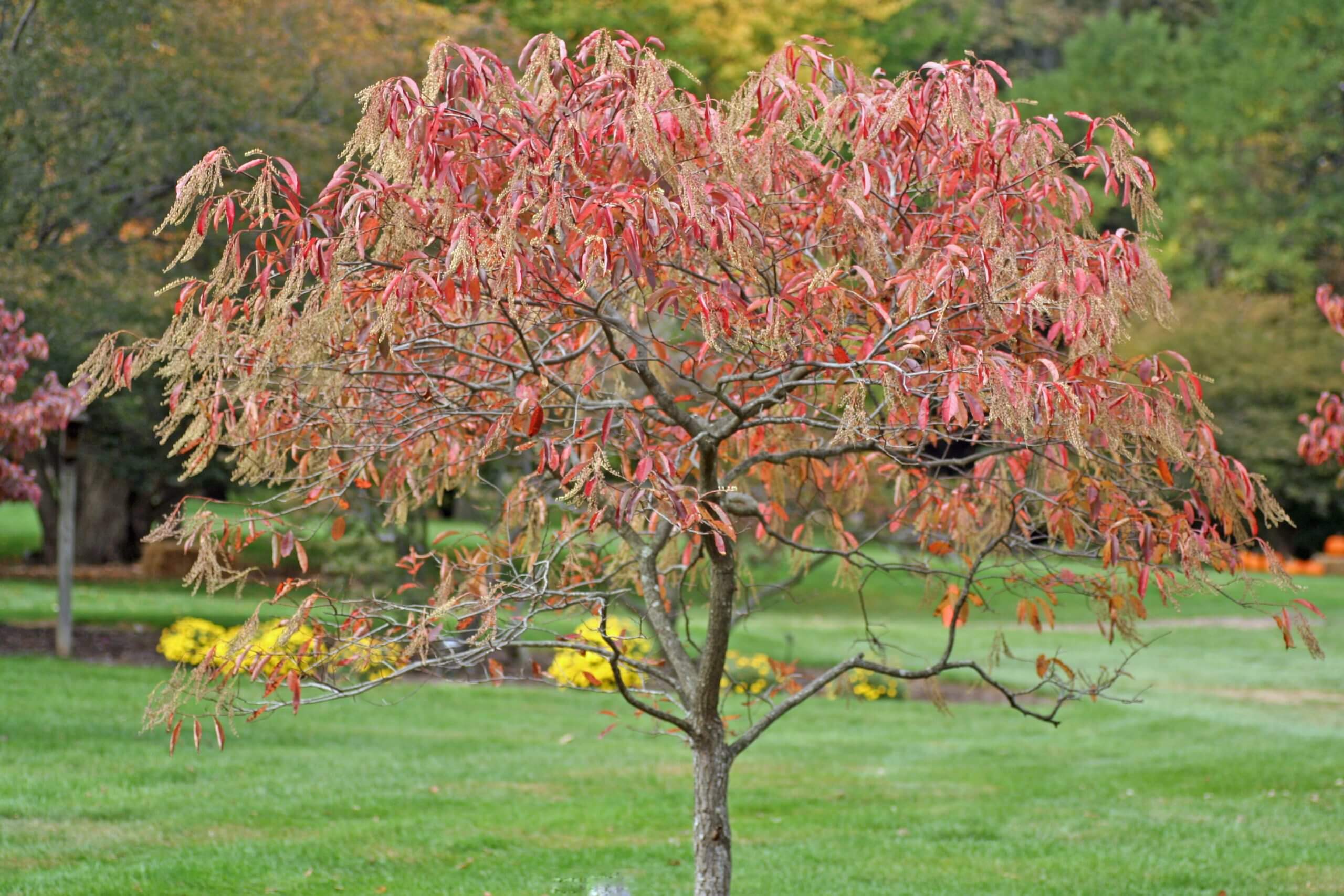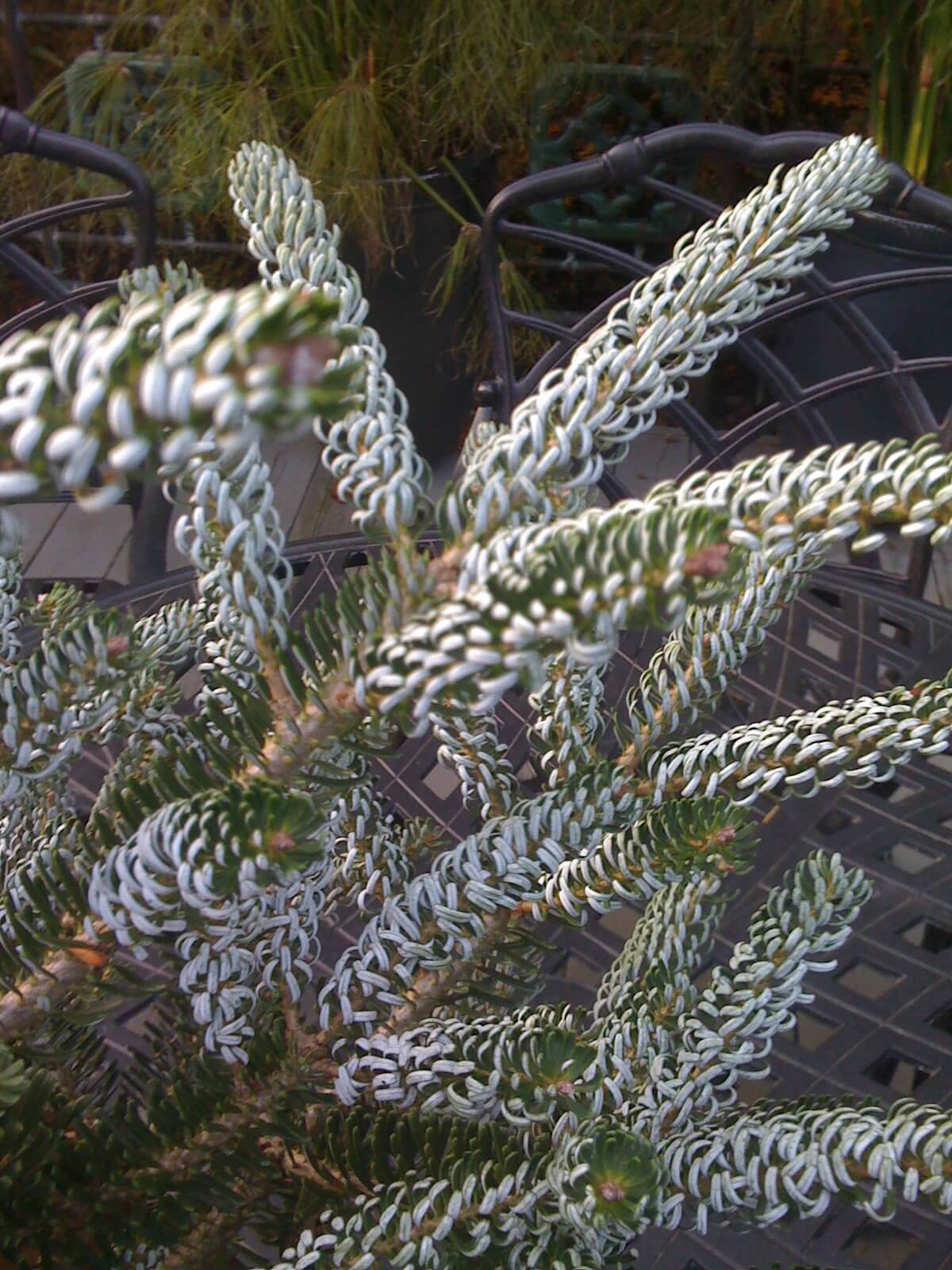
Warm and sunny fall days have continued here in the Pacific Northwest through mid November. They have given gardeners time to trim summer perennials, transplant all those plants that were planted in the wrong location, plant bulbs, dig and protect tender plants and finish general garden cleanup. The mild weather has also allowed us to enjoy plants that provide fall color, whether via flower, fruit, berry, bark, foliage or a combination of these. I still have dahlias blooming in my garden, and while the plants are not at their best, they are still providing enough flowers for bouquets.
Fall Trees

Fall tree color around the Portland, Oregon area has continued to be spectacular. Maple trees, in particular, are planted throughout the metro area. An outstanding one for bright red color is Acer rubrum ‘Frank Jr’ (Redpointe red maple). It has a straight and dominant central leader and grows in a pyramidal shape, making it an excellent street tree. Another superb tree for red fall color is Oxydendrum arboreum (sourwood). It is often overlooked but deserves to be seen in more gardens. In addition to great fall color it blooms in the summer, offering fragrant, creamy white, bell-shaped flowers on drooping clusters. There are not many trees that offer summer flowers and then a fall show of color.
In my own garden, I have been slowly adding plants for fall color, including slow-growing or dwarf evergreen conifers and gymnosperms for container planting on my deck. Our deck is alive with color all summer, and then upon the arrival of winter, the color is gone. Since these conifers like excellent drainage, I add Black Gold Perlite to the Black Gold Natural & Organic Potting Soil that I use. I find that perlite helps make the drainage extra sharp and improves better overall aeration. When I am planting containers in the spring and summer, I also add an all-purpose fertilizer. Most of the conifer additions to my deck are relatively new, approximately two years old, and thus far they are all thriving.

While we usually think of gymnosperms as being coniferous, needled and evergreen, that is not always the case. The Ginkgo is technically a gymnosperm even though it is a deciduous tree with broad leaves. There are new ginkgo varieties entering the market for the home gardener and many are slower growing and smaller in size when compared to the standard Ginkgo biloba, which is very large. This year on my deck, in a container, the diminutive Ginkgo biloba ‘Mariken’, which only reaches 2 to 3 feet in height, provided wonderful brilliant gold fall color.
Another unlikely gymnosperm is the genus Podocarpus. It has a very diverse assortment of variants with regard not only to foliage and form but also to winter hardiness. Before planting one in a permanent location, it is a good idea to check your zone–most grow best in USDA hardiness zones 8 to 11. I think many gardeners, myself included, like to push the zone on some of the plants we grow. I have several plants in my garden that need some extra protection in the winter and because the plants are so outstanding, I do not mind this extra effort. One especially noteworthy Podocarpus that I give special protection to in the winter is P.elongatus ‘Icee Blue’. I have had this in a large pot for perhaps five years, and it has reached 6 feet in height. While it has fairly dense, pendant branches, what makes ‘Icee Blue’ worth the extra protection is the cool blue-gray foliage. Since it is not well known in my zone, when people visit our garden it is one plant that gets the question: “What is that”? While, it will survive a light frost, I do not take chances and keep it on a cart, so I can easily move in into the garage on cold days or nights.

Conifers for Containers
A new container conifer for me this year was Abies koreana ‘Horstmann’s Silberlocke’. This Korean fir looks good at any time of year but is a ‘stand out’ on the winter deck when it does not have to compete with all the flowering summer annuals. The cultivar ‘Horstmann’s Silberlocke’ has blue needles that slightly curve around the stem, showing off their silver-white undersides. This is a holiday container plant that needs no decorating other than having a light shine on it at night. It can easily be kept in a container as it is a relatively slow grower, managing only 6-8 inches a year. Another nice feature of this conifer is that in our Pacific Northwest climate, it is winter hardy and does not require protection. My specimen is not trained to a single trunk, as we might think of with many firs, but instead has a bushy shape. The conifer container phase I am in has greatly increased my plant palette, and I am finding there is a seemingly unlimited supply of new plants for me to try. Many evergreen conifers are also ideal container plants for an entryway during the winter holiday season. Try a new one in your garden!
